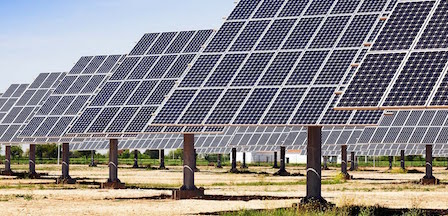Publié le

From Lei Chen Zhen, student and Équiterre volunteer
The successful closing of the COP21 conference in Paris has marked the end 2015 and made history as the first universal agreement on climate change. The world’s leaders, corporations and other influential entities have already recognized, since the middle of the 20th century, that climate change was a top global priority. Therefore, setting worldwide and national targets, as well as coordinating government efforts seem to be the obvious plan of action. Together, all emission-reducing efforts will aim at preventing a temperature rise above the target level of 2 degrees Celsius.
The topic of renewable energy took center stage in the COP21 Paris conference as it is receiving increasing attention from the world’s nations and investors. Low-carbon energy sources are seen as the silver lining to our climate crisis, and are hoped to become the main source of power in the future. On the other hand, the fossil fuel industry, which dominated most world economies since the early days of industrialization, is being progressively phased out at the looming prospect of a low-carbon global economy. The drivers of this energy transition are twofold. One is the plunging cost of technology, and second is the shift of investments from carbon- intensive projects to emission-free sources.
While the climate change deniers backed by big oil companies are fighting a losing battle against climate science, some argue that the transition into low-carbon alternatives is inevitable. Tony Seba, a leading academic from Stanford University, says that the change is already occurring faster than we think, with plunging costs of technology, which will eventually drive fossil fuels into obsolescence and sweep off political resistance by 2030. “When you look at the industry from a technology cost curve and the adoption of the market of technologies such as solar and electric vehicles, and energy storage, and the astonishing progress in self driving cars, it’s actually happening more quickly than I predicted. […] What the resource-based industries don’t get is that technology adoption happens in an exponential manner.” (1) Seba stresses that, regardless of the outcome in Paris, technology advances and rising consumer demand for cheaper electricity are the main drivers of the energy transition, rather than a global policy. Once costs fall below a certain threshold, the growth of renewables is exponential and inevitable.
Clearly, though, saving the world isn’t going to happen merely with innovation and technology, as these will need to be backed by coalescent efforts from policy makers and various pressure groups that push for the adoption of renewable energy. Under the Paris agreement, more countries have pledged to follow the example of the EU and adopt carbon tax programs to fund their de-carbonization plans. Nonetheless, the true power for change rests in the hands of the pressure groups, among which the financial sector can play a big role. In addition, the Paris deal will most likely act as a promoter of massive investment flows into solar, wind and other emission-free alternatives.
Since the 1970’s, numerous investment firms have been at the forefront of a movement called Sustainable Investing, which has strong inclinations for low-carbon investments at the detriment of fossil fuels. With rising concern for global warming, this new approach to equity selection is progressively becoming an integral part of mainstream global portfolios. Aside from lobbyists, investors have the most power in pushing corporations to reduce their ecological footprint, either through shareholder voting, or simply by moving funds in and out of these firms on their free will, thus directly affecting the valuation of stock prices. In fact, energy investment is already taking effect on the values of coal companies, as they are the first in the fossil fuels sector to feel the blow. The Stowe Global Coal Index, which tracks the stock performance of 26 major producers, has lost 59 percent of its value in 2015. This points to a shift of "many trillions of dollars toward low-carbon technologies and away from old fossil-fuel technologies,"(2) says Mindy Lubber, CEO of Ceres, an organization that works with investors to push companies for better environmental performance. JP Morgan, a New York-based investment firm, announced that it has joined a new movement rallying investment banks around the world to scale back coal investment in high-income OECD countries (3). This move can be justified by the desire of the financial sector to take part in the combat for climate change, and by the falling costs of renewables and natural gas, which makes coal a much less attractive investment in comparison to just four years ago, when the demand was well above the supply.
While we expect that the asset mix of global portfolios are reflecting the decline of coal and other carbon-intensive activities as a result of technology, government policies and investor pressure, it is important to recognize that traditional energy sources will continue to play a big part in the energy mix of many developing countries in the years to come.
Sources :
(1) Renew Economy
(2) http://www.ceres.org/press/press-clips/big-oil-make-way-for-big-solar.-t...
(3) http://carbon-pulse.com/16747/




